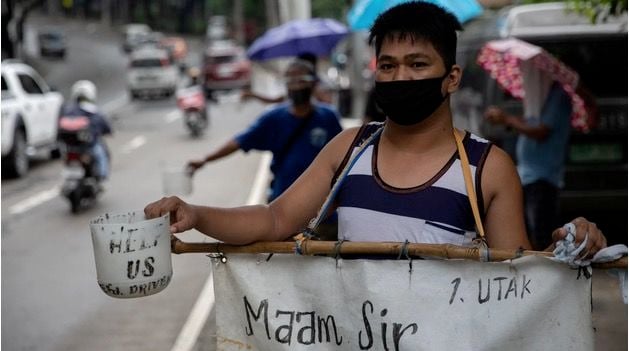Philippines plummets in to recession as virus numbers spike

The Philippines, reeling from Covid-19 lockdowns that have destroyed businesses and thrown millions out of work, plunged into recession after its biggest quarterly contraction on record, data showed today. The Philippine Statistics Authority says GDP 16.5% year-on-year in the second quarter as the country endured one of the world’s longest stay-at-home orders to slow the spread of the virus that’s devastated economies globally. It follows a revised 0.7% contraction in the first three months of the year and marks the biggest drop in economic activity since records began in 1981 during the Ferdinand Marcos dictatorship. It’s the country’s first recession in 3 decades.
The outlook for the archipelago is bleak, with the number of coronavirus infections surging past 115,000 this week – a more than fivefold increase since early June when economy-crippling restrictions were eased. The Philippines is expected to exceed Indonesia in the next few days, to become the country with the highest number of cases in Southeast Asia. According to acting Socioeconomic Planning Secretary Karl Chua:
“Without doubt, the pandemic and its adverse effect on the economy are testing the economy like never before. But unlike past crises, the Philippines is now in a much stronger position to address the crisis.”

As health workers struggle to cope with the inundation of patients, more than 27 million people in Manila and 4 surrounding provinces on the main island of Luzon, which accounts for more than 2 thirds of the country’s GDP, went back into a partial lockdown for 2 weeks on Tuesday to ease the strain on hospitals. But President Rodrigo Duterte, who was reluctant to tighten restrictions after millions became jobless in the first shutdown, warns the country can’t afford to stay closed for much longer:
“The problem is we don’t have money anymore. I cannot give food anymore and money to people,”
The Philippines’ economic woes have been amplified by a drop in remittances from the legions of Filipinos working abroad, who typically send money to their families every month, which fuels consumer spending – the main driver of growth. Remittances fell 6.4% in the first 5 months compared with the same period last year, according to the central bank, as thousands of seafarers, cleaners and construction workers lost their jobs and returned home. Consumer spending in the second quarter plummeted 15.5%, the statistics agency said.
“It will be a rough road to recovery as trade-offs between economic recovery and health will remain a big challenge to both the private and public sectors.”
SOURCE: Bangkok Post | Nikkei Aian Review
Latest Thailand News
Follow The Thaiger on Google News:


























